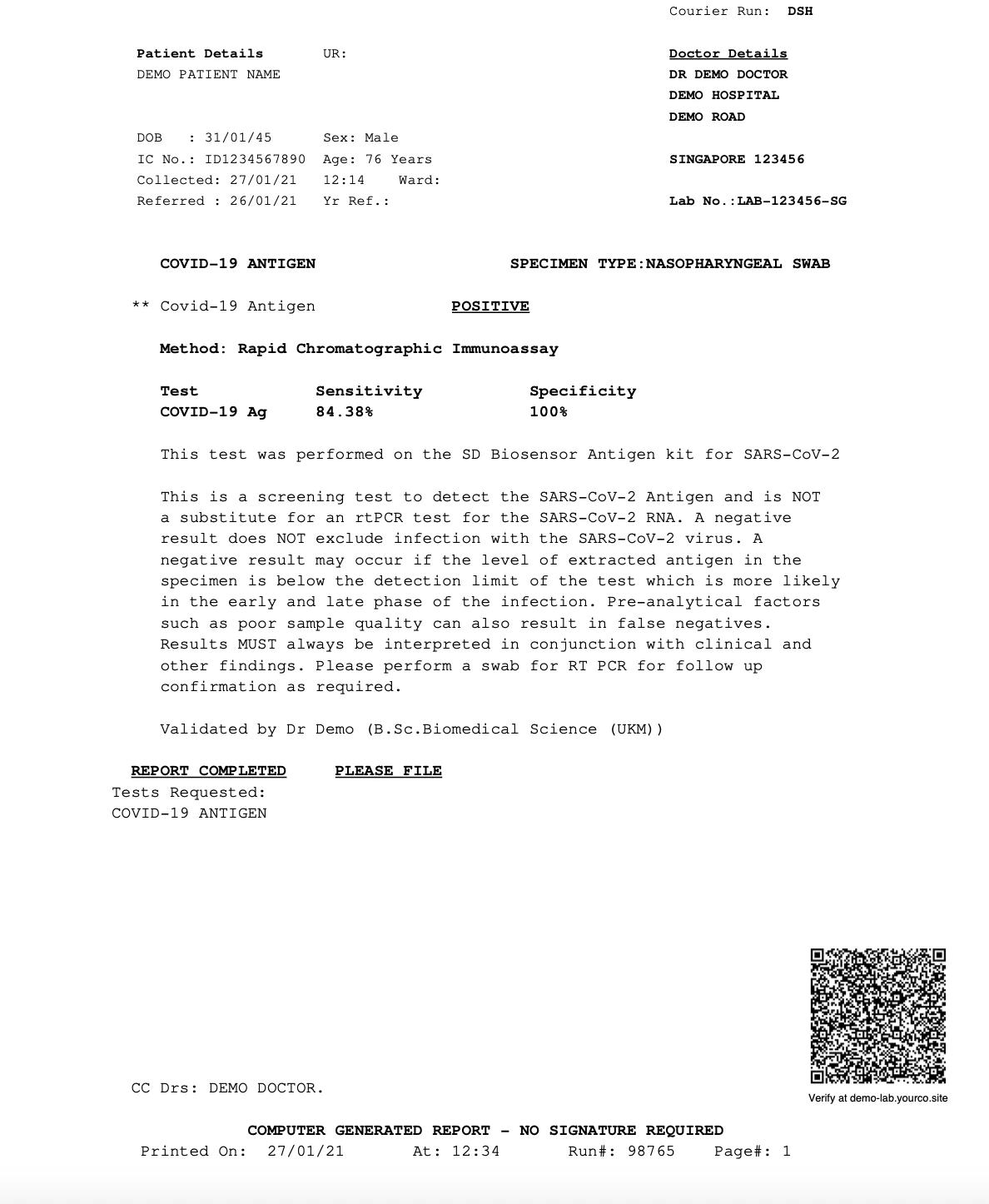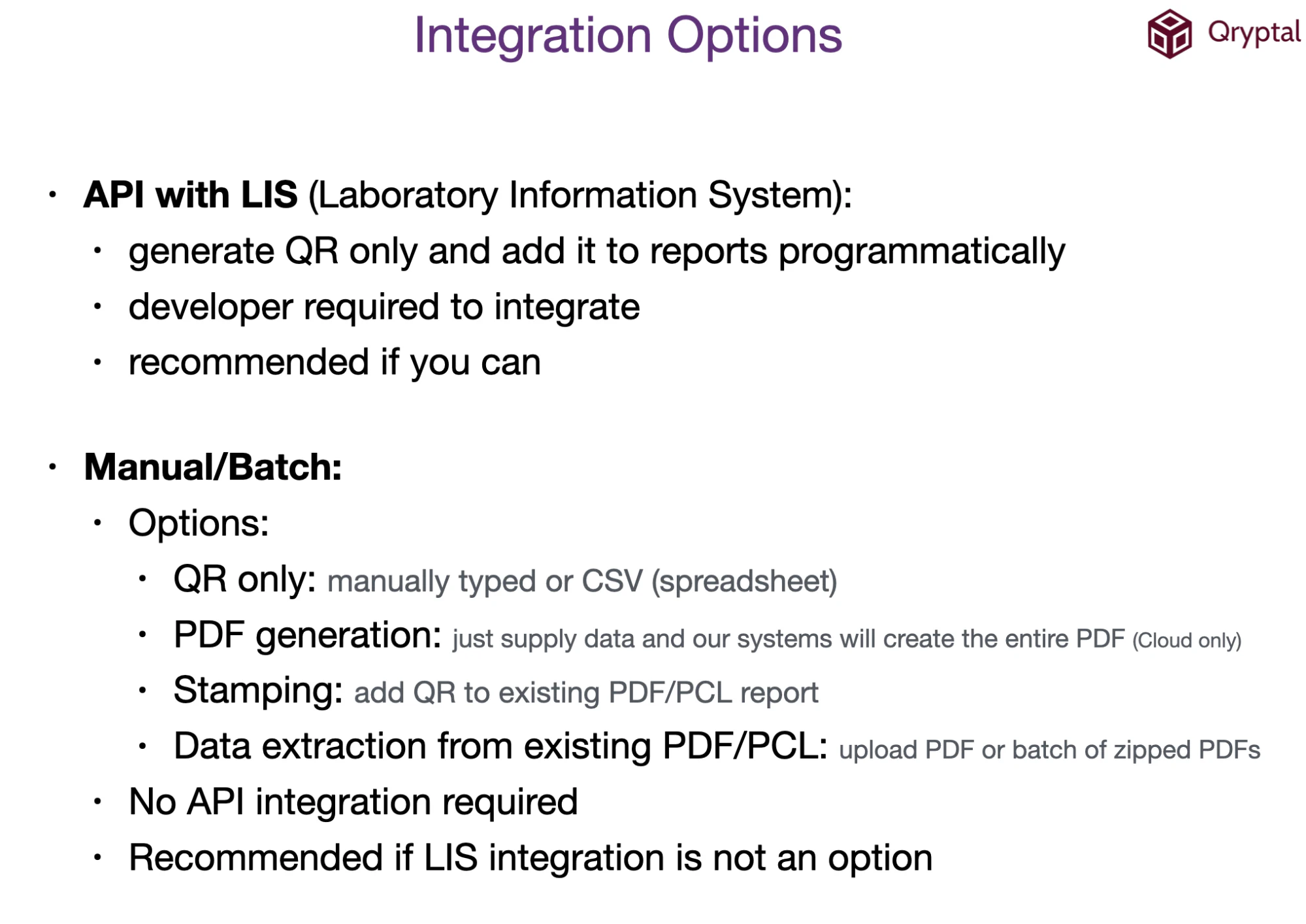Integrating document security into COVID Test Reports?
- Rajesh Soundararajan
- Jun 01, 2021
- 4 min read

Solving the integration challenge with Secure QR
The massive increase in demand for Covid tests and resultant reports during the last 18 months ever since COVID-19 started, has led to a surge in workload on Laboratories & Laboratory Information Systems. Laboratories across the world generate thousands of certificates and reports each day – for COVID tests of different types, Chest X-Rays, Antibody tests, and now even vaccination certificates are an important document being generated by health authorities globally. The huge requirement for such tests and the associated reports and certificates is keeping the testing labs and service providers busier than ever.
However, there has been a big challenge too. There is a massive shift in the audience for the certificates and reports generated. In the past, usually a lab report was simply a private document between a patient and their doctor who might use the same for a diagnosis and treatment. Today’s reports & certificates require the capability of verification by third parties such as immigration and border control authorities or event organizers who need to assess the ability of the document holder to travel or board a flight or gain entry into a stadium or an event.
Furthermore, the authorities’ increasing dependence on timely COVID related certifications requires the relevant information to be captured properly by the laboratories including but not restricted to type of test, time of test or sample collection, the result, identification of the person and so on.
The need for such reports for travel and other essential purposes which would otherwise be denied is putting pressure on systems to deliver and for people to find a way to bypass the regular route. Therefore, it is only natural that bad actors would enter the fray to forge the certificates issued by reputed laboratories or even generate fake ones. Such incidents are only growing and creating a headache for the authorities as they handicap their ability to control the pandemic.
To weed this out, the focus has shifted to verification and verifiable reports and one way in which this can be done is by QR codes that can be scanned to check the details. In some countries, it has been made mandatory to have QR codes on Covid test reports for relevant authorities to be able to verify the information.
Of course, Secure QR codes are the way to go as regular QR codes may lead to phishing and negate all the hard work and benefits of trying to capture and present the true information. Hence laboratories need to integrate Secure QR codes into their reports. This may sound onerous but can be done easily as we show below
The first way is to integrate Secure QR code with your LIS
This is the most desirable and easy method
Generate a QR code and then add it to the reports programmatically
You will require a developer to integrate the API with LIS
Reports are generated as before but will now carry the Secure QR code which can be scanned to validate the information on demand.

Schematic diagram of LIS integration workflow
If LIS integration is not possible then there are a host of Manual /batch Options that can be considered
You can do batch or manual integration in the following ways
QR Only integration where the critical data is manually typed or uploaded via CSV file (spreadsheet).
PDF generation is another method where you only supply the data. For example, the Qryptal QR system will create the full PDF based on a pre agreed template. Please note that this is a cloud-only service that we offer.
PDF Stamping is an option when you want a secure QR added to an existing PDF/ PCL report. This just “stamps” the existing report with the critical details and the full report itself captured in a secure QR and when you scan it you can see the report.
Data Extraction from an existing PDF or PCL or batch of zipped PDFs. Upload the PDF/PCL or even a batch of zipped PDFs. Our systems will parse the files and extract the data which is then captured in the form of a secure QR code and made a part of the PDF report.
The above options do not need API integration and Qryptal recommends these only where LIS integration is not an option.
Here is an example of a Covid Test lab report which carries a secure QR code.

Sample Covid test report with Secure QR Code
In summary the integration options can be listed as below

Summary of the integration options to incorporate Secure QR Code for Covid test reports
We will also come out with a post on implementation options to be considered when deploying Secure QR code for lab reports.
You may also be interested in -
- How do you integrate secure QR code with LIS in healthcare - making minimal or no changes?
- Did you know - there is an easy way to incorporate document security with your LIS ?
- WHO bearish on vaccine passports?
- Secure QR Code Based Document Security Gets a Boost from the pandemic




